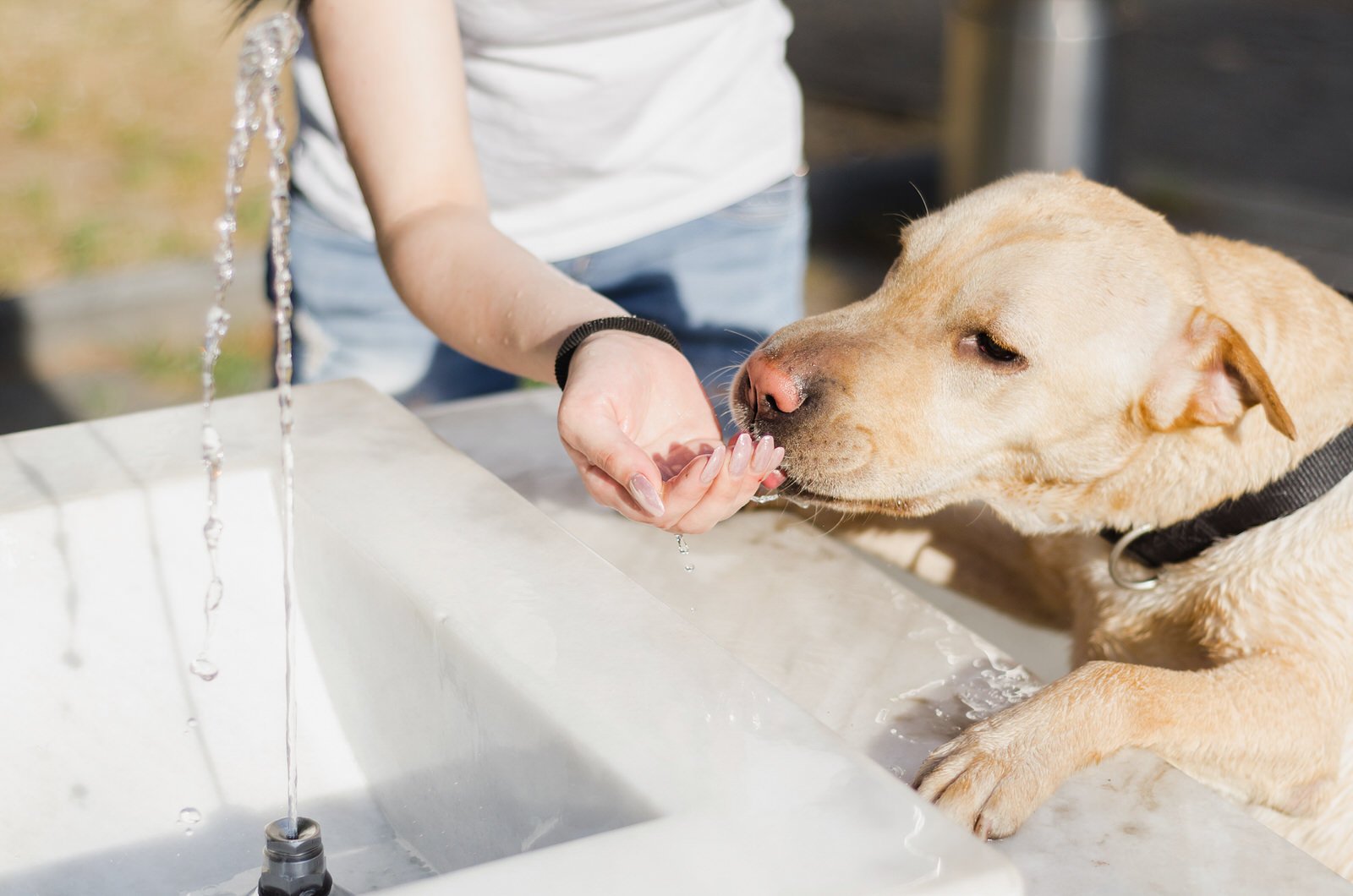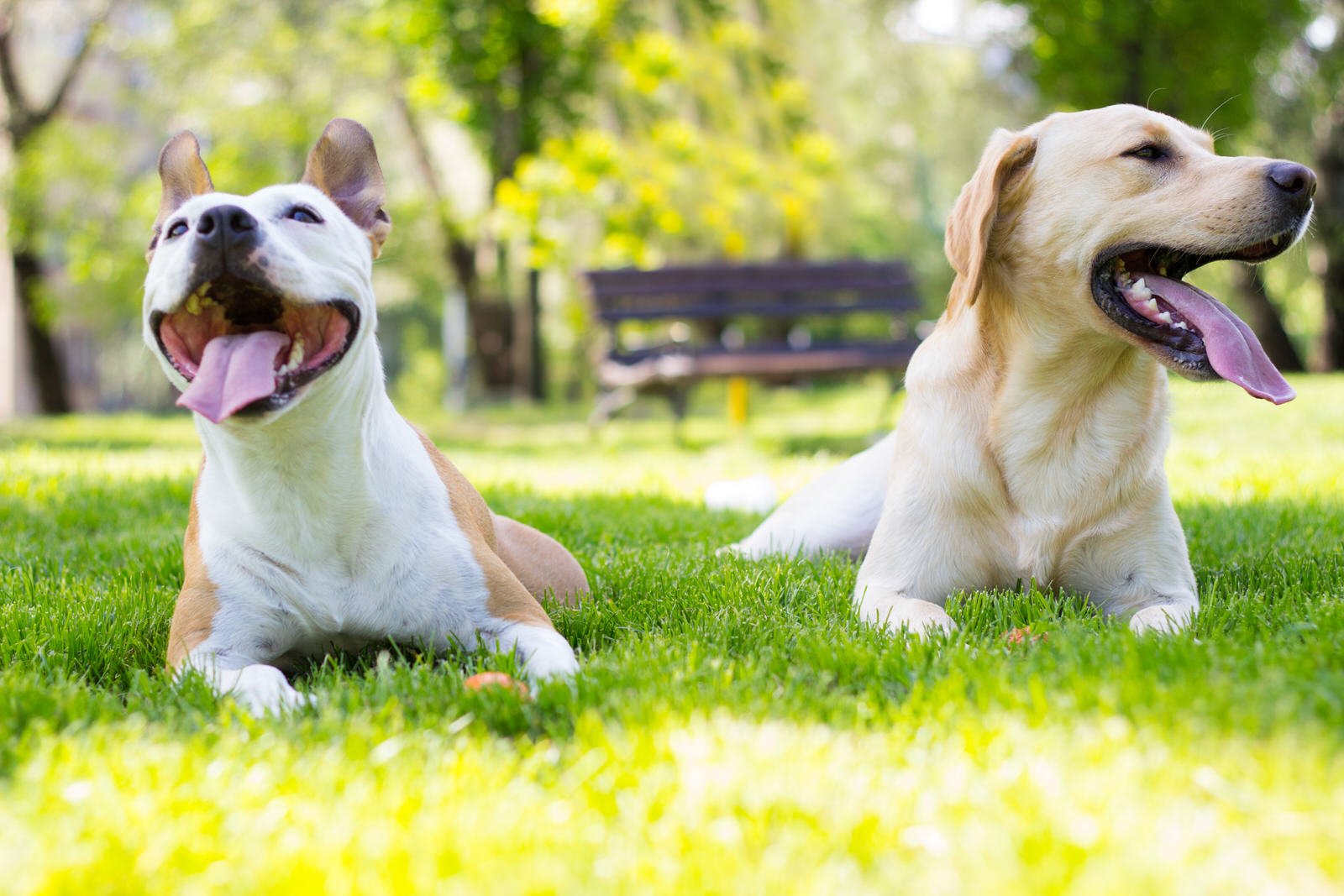
.
What is heatstroke, and what does it do to a dog’s body?
Dr. Marks describes heatstroke as when a dog’s body cannot get rid of excessive heat. It is extreme hyperthermia at the body’s core, and this extreme heat causes damage to many different body tissues. During a heatstroke, a dog’s body temperature will rise to 105 to 109 degrees Fahrenheit. For perspective, a typical dog’s normal body temperature is 100 to 102.5 degrees Fahrenheit.
How common is heatstroke in dogs who live in Chicago?
As stated by Dr. Marks, “Chicago summers are usually quite warm and humid, the perfect environment for dogs to develop heatstroke. Unfortunately, this syndrome is too common this time of year.”
What are the outward signs of heatstroke that a pet parent could recognize?
According to Dr. Marks, each case of heatstroke can vary depending on how long the dog’s body temperature has been higher than normal in addition to the number of risk factors for that particular dog. Some signs a dog owner may notice if a dog is having a heatstroke include:
- Excessive panting
- Excessive drooling
- Reddened gums and other moist tissues of the body
- Lack of urine production
- Skin that is hot to the touch, or if measured by a thermometer, a body temperature of over 103 degrees Fahrenheit.
- Vomiting blood and/or diarrhea (black, tarry stools)
- Weakness/wobbly, uncoordinated, or “drunken” gait
- Head tremors
- Seizures and/or muscle tremors
- Changes in mental status
- Collapse
If you suspect your dog is experiencing heatstroke, what steps should you take to help them?
Heatstroke is always considered an emergency, and the first thing to decide is where and how to bring your dog to receive veterinary care as soon as possible. Once at a veterinary hospital, your dog will be assessed and triaged, followed by appropriate, controlled cooling methods being started immediately.
Intense cooling, such as plunging a dog into an ice bath, is strongly NOT recommended because it will cause the blood vessels at the extremities to constrict, which will cause the core body temperature to rise even more. However, on the way to the veterinary hospital, some home strategies can be done to help. These include wrapping the dog in a lukewarm, wet towel, wetting the pads of the feet with rubbing alcohol, and placing a fan in front of your dog.
Are there any lasting side effects from having suffered a heatstroke for your dog?
Dr. Marks states that, “as is the case with many diseases, the earlier the patient receives medical therapy, the better the prognosis. However, in some cases, complications can occur, including sudden kidney failure, liver failure, gastrointestinal dysfunction, clotting difficulty, and in 36-50% of patients, this disease can be fatal. This shocking but accurate statistic highlights the importance of EARLY and AGGRESSIVE therapy for dogs with heatstroke.”

Now that we know what heatstroke looks like and how to treat it, let’s learn more about how to prevent heatstroke in your pet!
First, are some dogs more prone to suffering from heatstroke? What factors determine this?
Yes, some dogs are definitely more prone to suffering from heatstroke than others. Dr. Marks explains that dog breeds that have “brachycephalic syndrome” (the short- nosed, flat-face breeds with upper airway disease, narrow nostrils, small windpipe or trachea, and other abnormal respiratory anatomy) are at a very high risk for heatstroke. These breeds include English Bulldogs, Boston Terriers, Pugs, Pekingese, and related cross-breeds. Other risk factors include:
- The very old and very young dogs of any breed
- Previous history of heat-related disease
- Obesity
- Cardiovascular disease
- Asthma
- Dehydration
- Dogs with very thick hair coats
- Poorly controlled epileptic patients with frequent seizures
In what types of situations are dogs most at risk for having heatstroke?
While most people most often think of heatstroke occurring in dogs left outside on a hot, humid day with no access to water (which is definitely a situation that could cause heatstroke), there are several other situations that could cause it. Dr. Marks explains that some of these include:
- Dogs kept in enclosed or unventilated areas, such as cars, grooming dryer cages, etc.
- Lack of access to water and lack of shade while outside or in unventilated areas.
- Excessive exercise
- Anesthetic complications (known as malignant hyperthermia)
- Dogs with paralysis of their vocal cords (known as laryngeal paralysis)
- Dogs with excessive seizure activity
So what can you do to prevent heatstroke in your dog?
Dr. Marks encourages dog owners to first identify if their dog has any of the risk factors discussed previously, such as breed, age, chronic disease, previous history with heat-related illness, etc. If that is the case, she advises avoidance of situations that would place your dog at risk. Exercise these dogs before 10 am and after 4 pm during the warm months. Avoid leaving these dogs in cages at the groomer with dryers for extended periods of time or in unventilated areas such as cars. Always provide fresh, ample water when outside and plenty of shade. Most importantly, AVOID using ice baths or other extreme methods of cooling if there is concern of hyperthermia (increased body temperature). Seek prompt veterinary medical attention as described above.
*A special note for cat owners on heatstroke:*
Heatstroke can occur in cats, just as in dogs. Dr. Marks explains that it typically happens in cats exposed to a hot, humid outdoor environment without shade or water, or in breeds with flat faces, such as Persians. Cats suffering from heatstroke look very similar to dogs with heatstroke, but may show more sudden difficulty breathing. Cats should never open their mouth to breathe, and if they do, it is considered an emergency. You should follow the same protocol of getting your kitty to the vet immediately if you suspect heatstroke.
Heatstroke is a scary disease to think about, but armed with the right information, you can make sure that your pet stays safe in the warm weather this season!
Thank you to Dr. Natalie Marks at Blum Animal Hospital for her insight into heatstroke in dogs (and cats)! We appreciate her hard work in making sure that every Chicago pet has the best life possible!
Blum Animal Hospital is located at 3219 N. Clark Street and has been caring for Chicago’s pets since 1952. They have been accredited by the American Animal Hospital Association (AAHA) since 1972. To learn more about Blum, their Fear Free certification and the calming techniques they use, check out their website!
Windy City Paws is a Chicago dog walker and petsitter committed to providing helpful information to Chicago dog owners through its blog.





